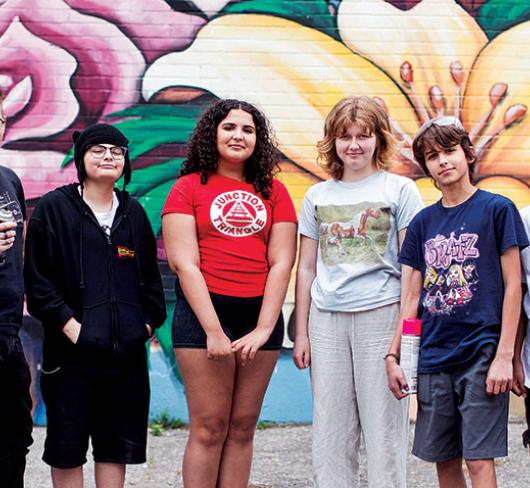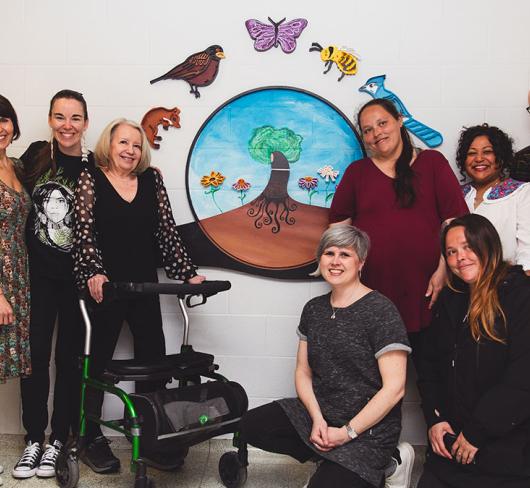
The Power of Collaborative Global Learning
Juliette, Kiera, and Michelle, 11-year-old students from Barrie, are online asking their new friend Rawa what it is like to live in Iraq. Michelle asks, “What is it like knowing that there is war so near to you? Are you able to go outside to play without being scared?” Three days later Rawa replies, “I live in a safe situation, but I consider that I live with those children that can’t go out to play and do what they like because they are in my country and we are all the same.”
These students are participating in Machinto, a global collaborative project supported by iEARN: the International Education and Resource Network. (iearn.org). iEarn is a nonprofit, international organization that includes over 20,000 school and youth organizations in over 115 countries and more than one million teachers and students who work together online.
Global collaborative learning uses technology as a tool to build relationships by collaborating, communicating, and sharing with others throughout the world. Students are not just using the computer to do the same activity they might do without a computer. They work on meaningful tasks and solve problems together, learning about different perspectives from their peers, thinking critically as a result of reality-based learning and questioning. What better way to learn about war, natural disasters, child soldiers, and segregated education than from the students affected?
Projects that are rooted in a collaborative framework prepare our students to become literate and responsible members of the global community. Research indicates that the jobs that will be available for the students in today’s classrooms do not yet exist, but we do know that they will involve working with technology to communicate and collaborate with others throughout the world. Students are growing up in a world where these tools are part of everyday life. As teachers, we can provide the opportunity for our students to use these skills and tools to collaborate with others and encourage their participation in the global learning community.
For the first time in history, students and teachers can provide feedback to their global partners by using wikis, blogs, forums, socially responsible social-networking tools, such as Taking It Global (takingitglobal.org), and other tools. Peer-to-peer feedback can be more meaningful to students than traditional editing, in which the teacher provides the feedback. In many situations, the students become the project leaders and facilitators and the teachers become learners.
Teachers involved in global collective learning constantly hear from students that they want to produce their very best work because they know it will be seen by the world. Even students who have never before written a final piece of work produce high-quality work. Knowing that it will be part of a worldwide project and being able to share their work motivates many reluctant writers.
Global learning projects can be integrated into all areas of the Ontario curriculum; they are not additions to an already full teacher load. For example, the Japanese picture book Machinto is the basis for a project in which students learn about how war affects children their own age. They read other books on a similar theme, such as Sadako and the Thousand Paper Cranes and Peace Crane,and are encouraged to make text-to-text connections. They create a picture book with the theme of peace and friendship, which is then posted on the Machinto website, machinto.org. Hard copies of the books are sent as gifts of friendship to children in areas of the world affected by war.
The Art Miles project (art-miles-project.org) pairs students in two classrooms who learn about specific aspects of each other’s countries. For example a grade 3/4 class in Innisfil, Ontario was paired with a class in Japan. Their specific task was to teach each other about festivals and fairy tales in their culture. The classes exchanged welcome packages to introduce their community: the Innisfil class sent Canadian flags, maps, hockey cards, maple syrup, a sweater, and a variety of Canadian stories, such as the Paper Bag Princess and The Very Last First Time, by Robert Munsch. In turn, we received origami paper, Japanese cartoons and games, and a wonderful collection of fairy tales.
Each class also prepared a short video showing their school and community. The final task was to paint a 60-square-foot mural to show what each class learned about the cultural fairy tales. On their half of the mural the Japanese students painted a scene from The Paper Bag Princess and the Ontario class painted a scene from the Japanese tale Little Fingerling on the other half.
This mural will be on display in Innisfil before it goes back to Japan to be part of the students’ graduation ceremony. It will then become part of a travelling art exhibition displayed at the annual iEARN international conference in Uzbekistan, at major art galleries throughout the world, and finally, along with 1500 similar murals, at the Great Pyramids in Egypt to celebrate the end of the UNESCO Decade of Peace in 2010.
The learning that resulted from this project extended far beyond reading and writing fairy tales, as students learned about each other, their schools, communities, and cultures.
My Hero (myhero.com) creates formal global learning circles that include six to eight classes from countries worldwide, coordinated by a project facilitator. Students research and write about someone in their own lives who is a hero. The project provides a structured writing tool that enables each student to produce a piece of writing and to include pictures, web links, bibliographies, and quotations. (The tools can be seen at myhero. com>Create.) At the end of the project, each class has a professional-looking web page featuring students’ stories.
Students can also produce a short film about their hero. Several grade 4 students from W. H. Day Elementary School in Bradford wrote, filmed, and edited a short film about their hero, Mohamed Sidibay, a former child soldier form Sierra Leone whom they had supported and communicated with for several years. They submitted the film to a national multimedia competition and won first place for the elementary school category. Projects like these allow students to work at their own level and the teacher to assess their individual learning.
Taking It Global also has collaborative tools that allow several classes to work together, investigate a global issue, and post student work using the collaborative classroom space at takingitglobal.org/tiged.
Students benefit hugely from participating in these projects. They develop a better understanding of global issues while increasing their appreciation and understanding of other cultures. As Juliette from Barrie commented after talking to her friend in Iraq: “It is important that we get to know others around the world and learn from each other. It is interesting to learn with students from other countries. We can study the same things, even though we are in different parts of the world. That is the way we are going to make the world a better and peaceful place, by really talking and working together.”

